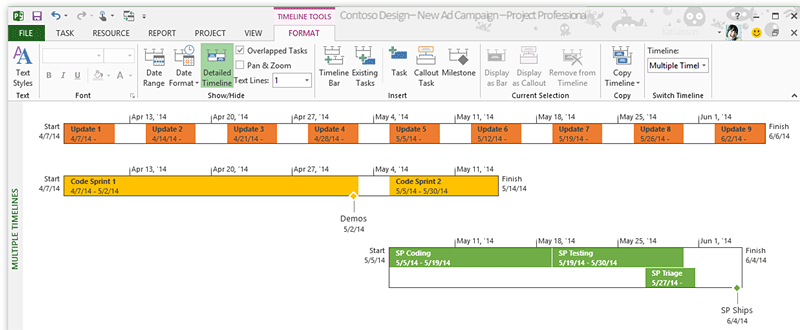

If you change your project to schedule from a finish date and it was previously scheduled from a start date, you will remove all leveling delays and leveling splits from tasks and assignments that have been automatically scheduled. If you drag a Gantt bar to change the finish date of a task, Project automatically assigns a Finish No Later Than (FNLT) constraint for an automatically scheduled task. You should set other constraints only when necessary (Right-click a task, then click Task Information). When you enter an automatically scheduled task, Project automatically assigns the As Late As Possible (ALAP) constraint to the finish date of the task. Your project management methodology requires you to schedule from a finish date.Īs you work with your project that is scheduled from a finish date, be aware of differences in the way that Project handles some actions: You are not sure when your project will begin (for example, you are receiving work from another source that could be delayed). You need to determine when a project must start so that it finishes on a specific required date. However, you might want to schedule from a finish date when: Even if you know the date that a project must be completed, scheduling from a start date gives you maximum flexibility. Nearly all projects should be scheduled from a known start time. Task dependencies, such as the finish-to-start dependency between the first and second tasks (as shown here), can change the project's finish date. In other words, the project finish date is the same as the longest task's finish date. When you schedule a project from the start time, all tasks start at the project start date unless you specify otherwise.įor both manually scheduled tasks and automatically scheduled tasks, with no task dependencies or constraints applied, the project's duration is the same as the duration of the longest task. When you create a new project, you first enter the project's start date. Read below in this article to learn more about manually versus automatically scheduled task scheduling. For example, tasks don’t move around as other tasks move. Of course, there are going to be exceptions.

To find the Project start date or to change it to another date, click Project, and then click Project Information. As tasks are added to the schedule and connected to other tasks, the start times of tasks will change, and the last task to finish determines the project’s finish date. When you add a new task to a schedule, it automatically is scheduled to start on the project’s start date. Yet more technical information about how Project schedules How do resource assignments drive the schedule? How do deadline dates affect the schedule? How does float (or slack) affect the schedule? How do manual and automatic scheduling affect the schedule? How does effort-driven scheduling affect the schedule? How do constraints on tasks affect the schedule? How does the project start date affect the schedule?


 0 kommentar(er)
0 kommentar(er)
